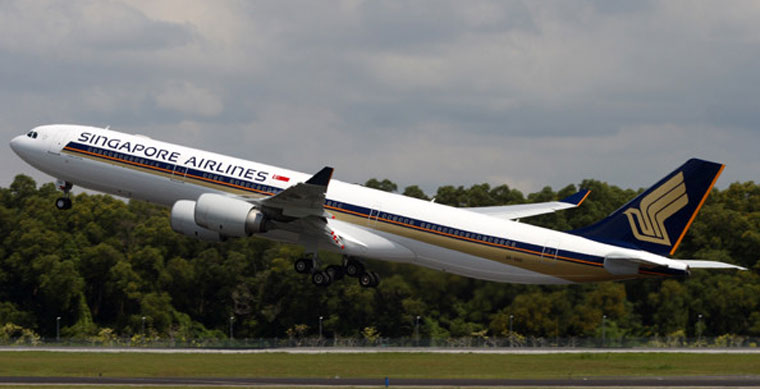Editor's note: Alfred Yeo is an Aerospace Engineering postgraduate.
Eight passengers and 14 crew members were injured after Singapore Airlines (SIA) Flight SQ424 from Singapore to Mumbai was hit by sudden major turbulence during descent on Oct. 18, 2014.
It was initially reported that injuries to the eight passengers and 14 crew members resulted after the aircraft touched the runway twice at about 10.15pm.
I highly doubt that this is true.
According to Bangalore Aviation, the report was that the turbulence occurred 30 minutes before landing, while on descent. I think this account of event sounds more reasonable, and matches most news sources as more information is made known.
Injuries and damages sustained
Source: bohtong.org
Furthermore, based on what is reported, the types of the injuries sustained can only occur if passengers are not buckled in. And 30 minutes before landing is usually the time the pilot turns on the seat-belt sign, and passengers then run to the bathrooms, or shuffle through their belongings in the baggage compartment, before the crew members insist they strap themselves in.
It matches the report that a crew member might have hit his nose and bled as well, as crew members are only all buckled in about 10 minutes before landing. If the injuries were caused during landing, there was no way a crew member could have hit his nose in the galley as he should have been buckled in.
Turbulence
The pictures showing the damage to the overhead compartments suggests that the turbulence was severe. But this is no threat to the plane. The plane is designed to be able to be thrown about in any type of turbulence and not be structurally damaged. Key takwaway here is that as long as you keep your seat-belt on, you can and will avoid any injury that can be caused by turbulence.
Lastly, reports showed that there were no warnings of any turbulence.
Turbulence can be classified into four main categories:
1. Low Level Turbulence which is caused by thermals/ surface friction,
2. Turbulence due to thunderstorms,
3. Mountain Wave Turbulence which is air being forced over a mountain, and lastly,
4. Clear Air Turbulence (CAT).
All the aforementioned types of turbulence can be predicted and detected using current weather radar technology EXCEPT CAT.
CAT is caused by the movement of air masses in the absence of any visual cues such as clouds, and is caused when bodies of air moving at widely different speeds meet. It usually occurs at high altitudes, which matches more closely with the report that the incident occurred 30 minutes before landing.
The plane had probably just began its descent but was still way above the area known as the "atmospheric boundary layer", which is the area under the influence of the ground where things like thunderstorms occur and thick clouds are formed.
This layer is usually entered about 15 minutes before touchdown. CAT is thought to be exacerbated by global warming. In the journal Nature Climate Change, Paul Williams and Manoj Joshi reported moderate to severe transatlantic turbulence would be 40 to 170 percent more frequent in a world that had twice as much atmospheric carbon dioxide as pre-industrial times.
The double touch down on the runway could still have been a possibility, though, but it would not have caused the damage or injuries reported. Usually in bad weather, the pilot does a hard landing at higher speeds on purpose. If the winds are strong or unpredictable, the pilot needs more control authority (which is the reactive-ness and effectiveness of his controls). He achieves it by landing at a higher speed so more air flows over the wings and tail, and a deflection in his control flaps will exert a stronger control force on the aircraft. If the runway is wet, the pilot may want to hit the ground hard to allow the landing gear to "spin up" more quickly giving the plane more ground control, as oppose to allowing the wheels to hydroplane which is practically skidding the plane down half the runway with no braking or control capability.
Now a bounce during landing is also a possibility, and probability unintended. But again this is probably not a big deal unless you are not strapped in. Regulations require the landing gear to hold up at a descent rate of 10ft/s when the plane is fully loaded. Typically, the landing rate is 2-3ft/s, and even hard landings rarely exceed 6ft/s. So there is no worry about the landing gear breaking or the planes structure failing unless the pilot is drunk or asleep.
Bad weather landing
Now with reference to the video of bad weather landing. Most major airports are equipped with a system called Instrument Landing System (ILS), which is the bunch of spikey things at the end of the runway.
What they do is tell the plane how high or low it should be, and how far off left and right it is, from the runways center line and descent path. There is a separate system called "autoland" on most commercial aircraft, which leverages on the ILS to automatically control and land the plane without the pilot touching any of the controls.
What this means is the pilot can basically land with a blindfold on without touching anything if he wanted to. Autoland is typically only used during bad weather, however, as the landing is usually not as soft as a pilots touch.
Related articles:
Things you are not told about aircraft emergencies
Major turbulence on SQ flight from Singapore to Mumbai is reminder to always wear your seatbelts
This is what a pilot sees when landing a plane at Changi Airport during stormy weather
If you like what you read, follow us on Facebook and Twitter to get the latest updates.
If you like what you read, follow us on Facebook, Instagram, Twitter and Telegram to get the latest updates.



